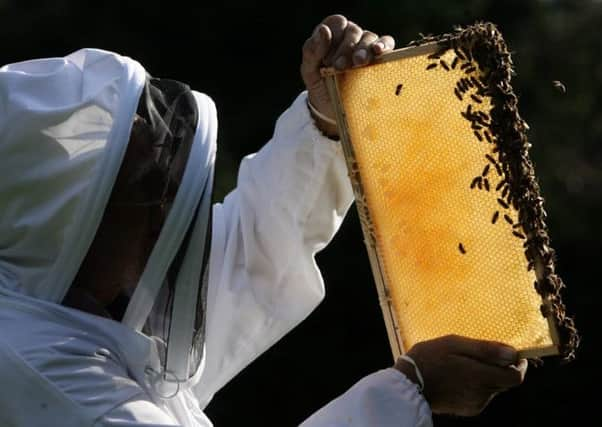Pesticides wipe out honey bee hives, study shows


Researchers say they have found a link between hive health and dietary exposure to clothianidin, one of the developed world’s most popular pesticides.
Colony collapse disorder (CCD) is a disease affecting bees which results in them abandoning their hives and eventually dying.
Advertisement
Hide AdAdvertisement
Hide AdThe phenomenon has been on the increase since 2006, leading to a huge loss of bees across Europe and North America.
Pinpointing the cause of CCD is crucial, as bees are prime pollinators of roughly one-third of all crops worldwide.
In his findings, released yesterday, Chensheng Lu, associate professor of environmental exposure biology at Harvard School of Public Health, found a link between low doses of imidacloprid – another neonicotinoid pesticide – and CCD.
His findings are similar to those from a study he carried out two years ago, which fuelled a debate over whether the use of pesticides was contributing to an ecological catastrophe.
Prof Lu’s latest findings, published in the Bulletin of Insectology, have shown low doses of a second neonicotinoid, clothianidin, had the same negative effect on bees. He said: “We demonstrated again in this study that neonicotinoids are highly likely to be responsible for triggering CCD in honey bee hives that were healthy prior to the arrival of winter.”
The new study looked at the health of 18 bee colonies in three locations in Massachusetts from October 2012 to April 2013.
At each location, researchers separated six colonies into three groups – one treated with imidacloprid, one with clothianidin, and one untreated.
There was a steady decline in the size of all the bee colonies through the beginning of winter, typical during the colder months in New England.
Advertisement
Hide AdAdvertisement
Hide AdBeginning in January 2013, bee populations in the control colonies began to increase as expected, but populations in the treated hives continued to decline. By April 2013, six out of 12 of the treated colonies were lost, with abandoned hives that are typical of CCD.
Prof Lu said: “Although we have demonstrated the association between neonicotinoids and CCD, future research could help elucidate the biological mechanism that is responsible for linking sub-lethal neonicotinoid exposures to CCD.”
More than 30 per cent of managed honey bee colonies in Scotland failed to survive the winter of 2011-12, almost double the previous year.
Phil McAnespie, former president of the Scottish Beekeepers’ Association, said he believed CCD was caused by a range of issues, not only chemicals.
“In December 2013 the EU put a two-year suspension on the use of neonicotinoids, which are chemicals sprayed on seeds, on the basis they may have been a contributory factor to CCD.But I’m led to believe that there is no black and white report saying that if used properly they are causing problems.”